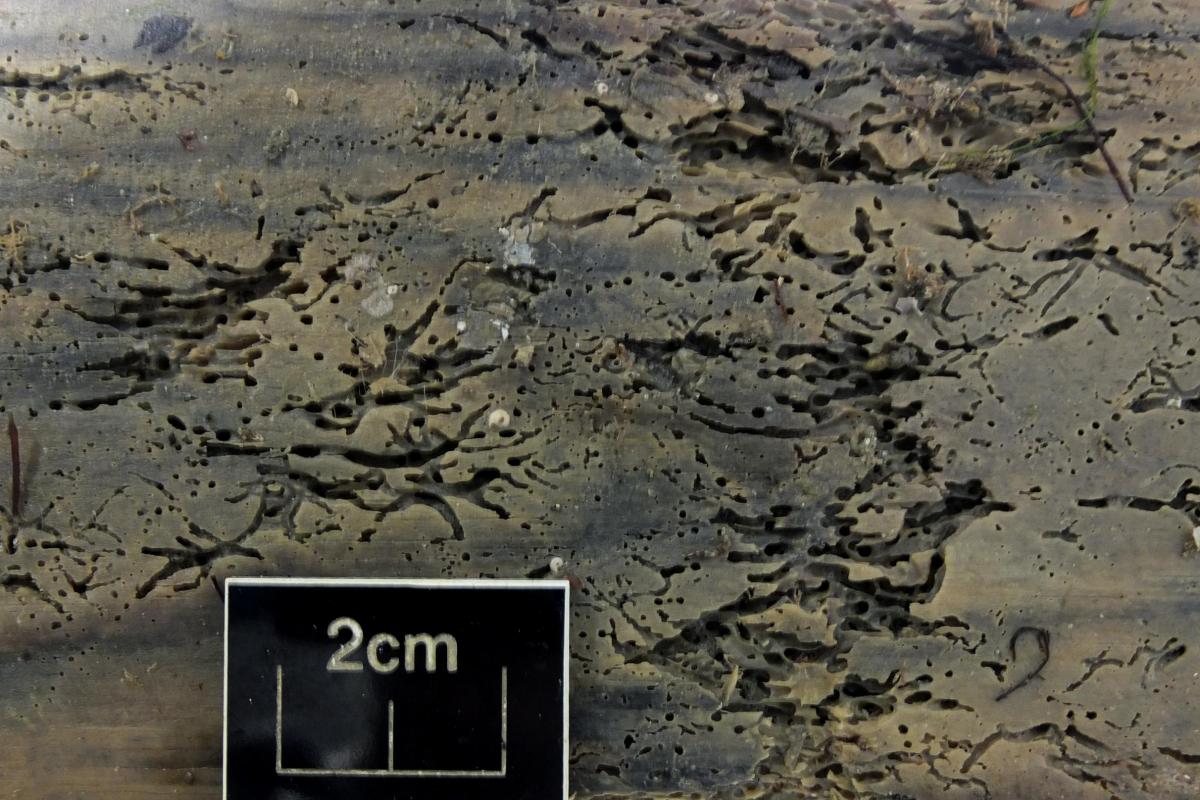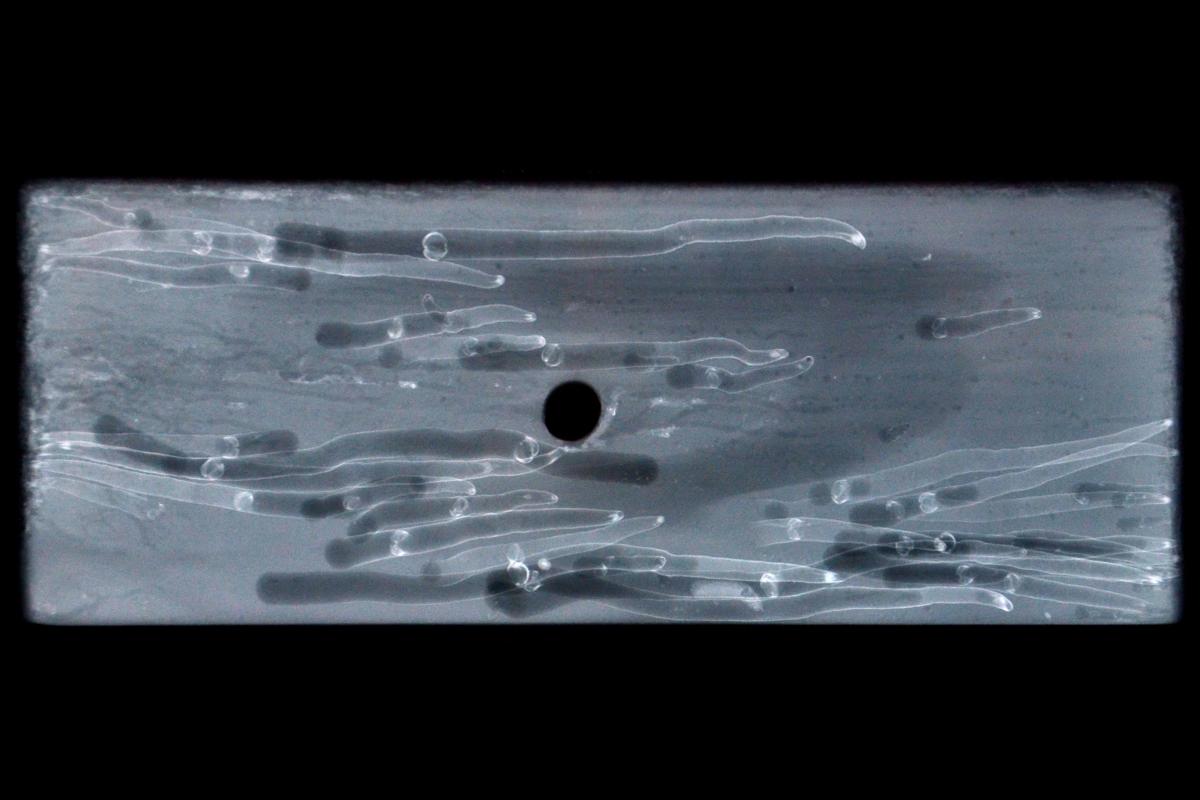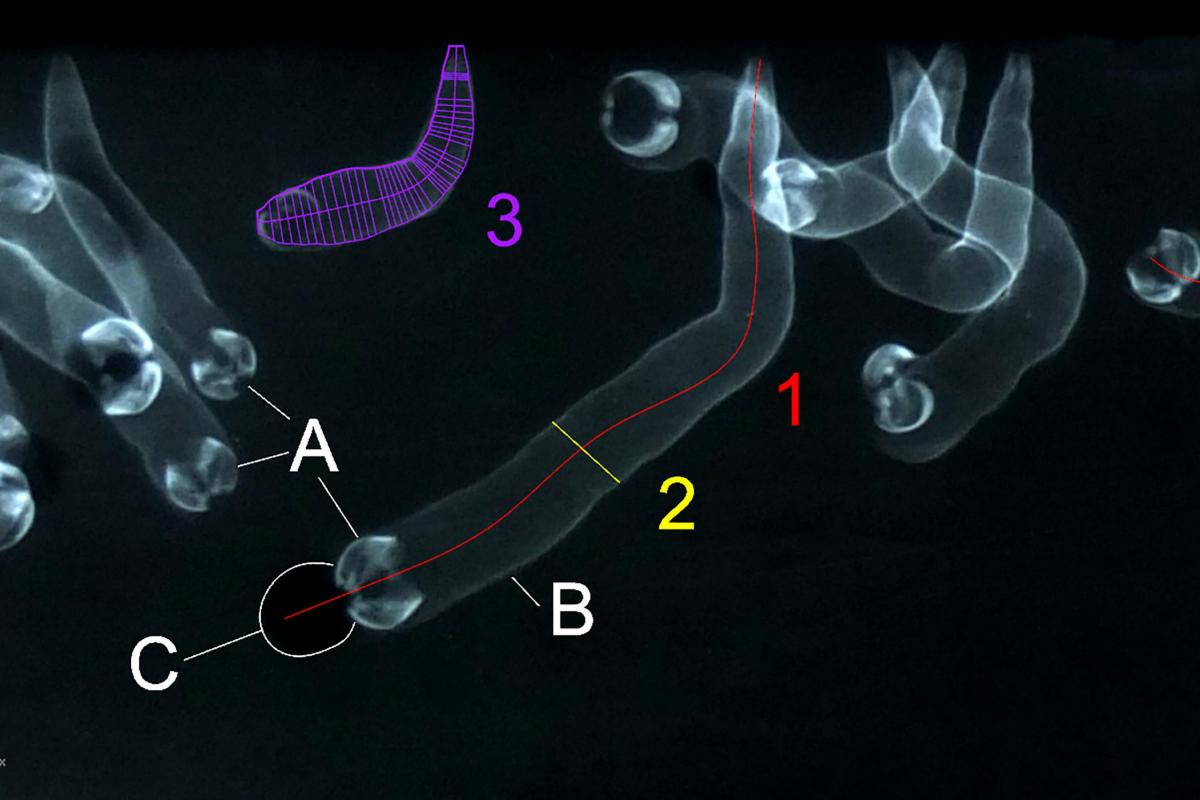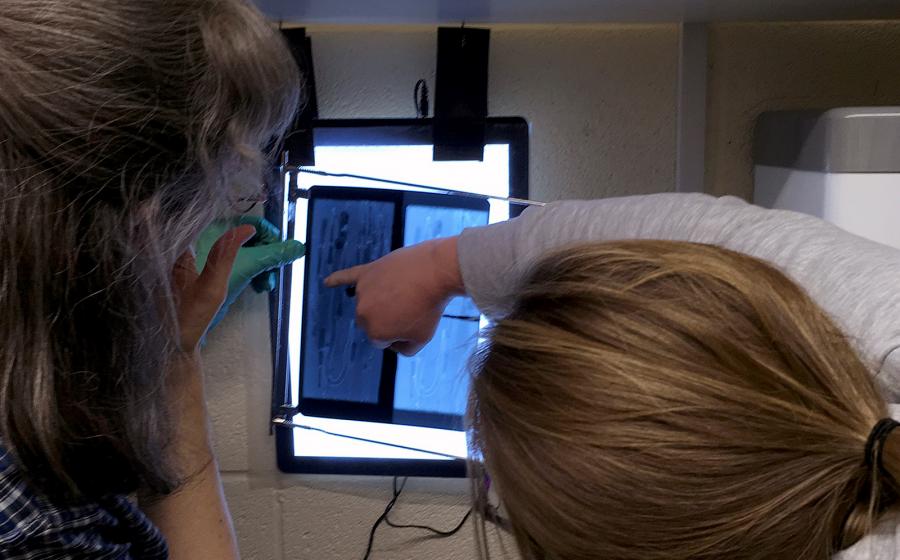Post-graduate student Kim Knight, recently visited Wessex Archaeology to use our X-ray facilities with our conservator, Lynn Wootten.
Kim is researching the risk and rate of biodegradation of several wooden shipwreck sites in the English Channel. Her work aims to formulate a method to identify sites with a high risk of degradation so that in situ protection or excavation can be better targeted.
For her studies, a series of wooden test panels made from elm, oak and pine are put in direct contact with the exposed wooden structure on the wrecks, allowing the panels to share the same physical and biological conditions. (The woods chosen were the ones most commonly used by European shipbuilders up until the mid-19th century.)
Over 6 monthly intervals, the panels are analysed, and tracings made of any damage using computer software. This allows an assessment of the amount of surface area and volume loss.



The surface area loss of many timber structures is often attributed to the species collectively known as the ‘gribbles’ and the internal volume loss of many timber structures is mostly attributable to species commonly known as shipworms.
The most common gribbles belong to the genus Limnoria or Chelura. They bore into exposed timbers 1−2 mm below the surface with Chelura seeking out the pre-softened Limnoria burrows to shelter in. Both species reproduce within these burrows and give birth to a small number of young which rapidly mature and produce secondary burrows away from the maternal burrow.
They can migrate over short distances, but their swimming capabilities are limited and so they can rapidly develop into large family aggregations. The interconnecting burrows weaken the wood’s surface causing it to disintegrate. As the surface of the wood breaks away, they bore deeper into the wood and are eventually responsible for a large amount of volume loss.
Shipworms (Teredinidae), settle on the surface of timber as minute larvae, but then metamorphose and begin to bore into the wood. They form calcareous tunnels which they inhabit for the duration of their lives. The tunnels become larger in both length and volume as they grow and feed, but the minute entrance hole they make as larvae on the surface of the wood never increase in size. Whilst the exterior of the wood may look seemingly untouched, the internal structure is often completely riddled, and the structural strength of the timber is lost.
Due to their calcareous lining, X-ray is one of the best methods of identification, showing up as white structures standing out on the X-ray film. When traced on a computer, the individual tunnel lengths and volumes can be measured. This can be calculated collectively to produce a total volume lost, and also to calculate how much volume is lost over set time periods, per species.
We are happy to be of assistance to Kim, and hope that in the future her work will help add to the informed management of our marine heritage.
